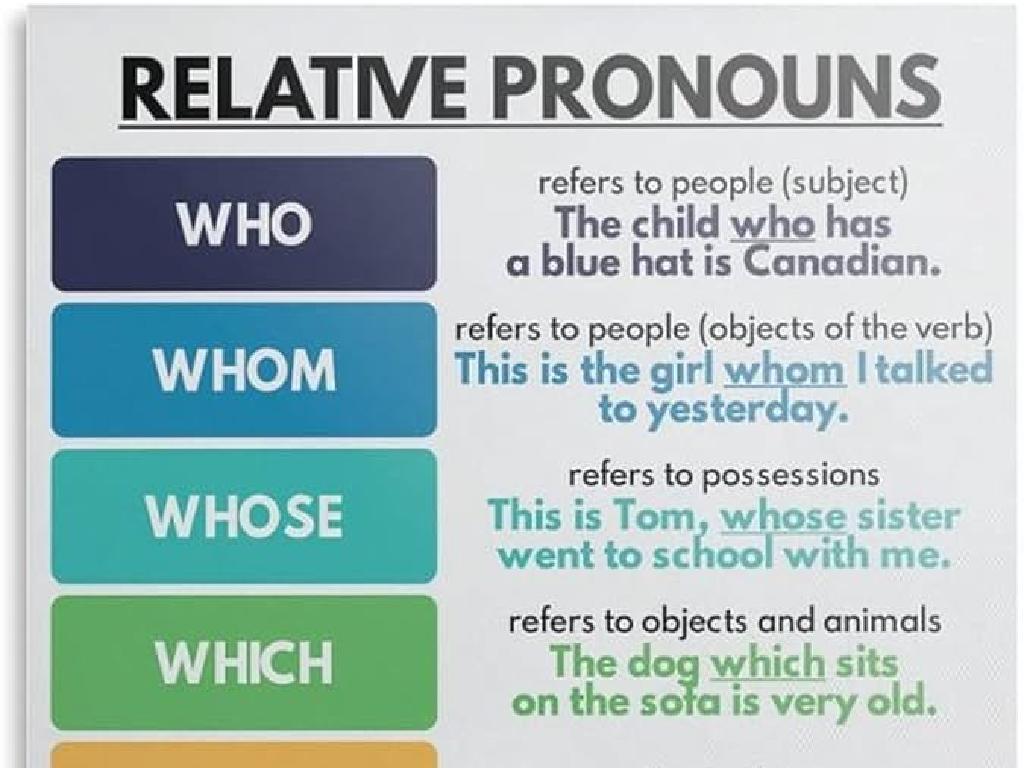Identify The 50 State Capitals
Subject: Social studies
Grade: Fifth grade
Topic: State Capitals
Please LOG IN to download the presentation. Access is available to registered users only.
View More Content
Exploring State Capitals
– What are state capitals?
– Significance of state capitals
– They’re not just locations, but places where important decisions are made.
– State capitals: Govt. and history hubs
– Every capital has its unique history and role in state governance.
– Engaging with capitals’ stories
|
This slide introduces students to the concept of state capitals, emphasizing their role as more than just places on a map. State capitals are where the local government is headquartered, making them vital to the state’s operation and history. Each capital has its own story and significance, often tied to historical events and figures. Encourage students to think of capitals as living museums of their state’s history and governance. Activities could include researching a specific capital, its history, and current role in government, or creating a travel brochure for a state capital highlighting its historical and governmental importance.
Exploring State Capitals
– What is a state capital?
– It’s the city where government is based.
– Key roles of state capitals
– They host the capitol building & governor’s office.
– Examples and their significance
– Sacramento is vital for California’s legislation.
– Understanding capital importance
– Capitals are central to state identity and governance.
|
This slide introduces the concept of state capitals, aiming to help students understand not just what they are, but also their roles and why they are significant. A state capital is typically the city where the state government is headquartered, including the governor’s office and the state legislature. Use examples like Sacramento, California, to illustrate the role of a capital in state legislation and governance. Discuss how capitals often become symbols of the state’s history and identity. Encourage students to think about their own state capital and what makes it unique or important.
Memorable State Capitals
– Unique features of capitals
– Austin has a thriving music scene; Honolulu is on an island.
– Stories behind capital selection
– Why is Sacramento the capital of California? Historical decisions!
– Quick facts about capitals
– Juneau is accessible only by boat or plane; not all capitals are big cities.
– Engaging with capital trivia
|
This slide aims to make learning about state capitals engaging by highlighting unique aspects and interesting trivia. Discuss the distinctive features that set some capitals apart, such as Austin’s reputation as the ‘Live Music Capital of the World’ or Honolulu’s unique island location. Share anecdotes about how certain cities became state capitals, which can include historical, geographical, or political reasons. Present quick facts that students might find surprising, like Juneau’s accessibility or the fact that some capitals are not the largest cities in their states. Encourage students to think of these capitals as more than just places on a map, but as cities with their own stories and characteristics. This can spark curiosity and make the memorization of capitals more meaningful.
Mastering the 50 State Capitals
– Techniques to memorize capitals
– Use songs, flashcards, and maps for memorization
– Mnemonic devices for tricky names
– Create funny or memorable phrases to recall names
– Group activity: Capital & State Match
– Work together to connect each state to its capital
|
This slide introduces students to effective strategies for memorizing all 50 state capitals. Encourage the use of different techniques such as songs that list the capitals, flashcards for repetitive practice, and using maps to visualize locations. Introduce mnemonic devices as a way to remember more challenging names, by creating phrases or associations that are easy to recall. The group activity is designed to reinforce learning through collaboration, where students match states with their respective capitals. This can be done using a large map on the board, a printed worksheet, or an interactive digital tool. Provide guidance on how to create mnemonic devices and ensure each student participates in the group activity. Offer praise and assistance as needed to maintain a positive learning environment.
State Capitals Quiz Time!
– Exciting quiz to test your knowledge
– Multiple-choice questions on state capitals
– For example, what is the capital of Texas? A) Houston B) Austin C) Dallas D) San Antonio
– Guess the capitals, use your learning
– Don’t worry if you’re unsure, use clues from what we’ve learned
– Everyone participate, it’s fun!
|
This slide introduces a fun and interactive quiz to help students review their knowledge of the 50 state capitals. The quiz will consist of multiple-choice questions, providing a way for students to apply what they’ve learned in a low-pressure environment. Encourage all students to participate and make educated guesses, reinforcing the idea that it’s okay to take risks and learn from mistakes. Provide positive feedback and hints to guide students towards the correct answers. The goal is to create an engaging learning experience that solidifies their understanding of state capitals. Prepare a list of questions with four options each, ensuring that all 50 states are eventually covered. Consider offering small rewards for correct answers to motivate participation.
Class Activity: Create Your Capital
– Imagine founding a new state
– Draw & name your capital
– Use the blank map template provided
– Share your capital’s name
– Tell one fact about it
– Think of a unique feature or landmark
|
This activity is designed to engage students with the concept of state capitals by allowing them to use their creativity to imagine and design their own. Provide each student with a blank map template and some coloring materials. Encourage them to think about the geography, culture, or history they might want their capital to represent. After they’ve drawn and named their capital, ask them to share its name with the class and present one interesting fact or feature about it. This could be a natural landmark, a historical reference, or something entirely imaginative. For the teacher: Prepare to offer guidance and ensure each student has a chance to present. Have a list of the actual 50 state capitals ready for reference and to inspire the students. Consider grouping students for collaborative work if time and class size allow.
Wrapping Up: State Capitals
– Recap of 50 state capitals
– Importance of state capitals
Knowing capitals helps in geography and understanding state identities.
– Introduction to state flags
Each flag has symbols representing the state’s history and values.
– What’s next in our journey
|
As we conclude today’s lesson, it’s important to review the state capitals to reinforce the students’ memory. Understanding state capitals is crucial as it gives students a better grasp of the geographical layout of the United States and the unique identity of each state. Next class, we will explore state flags and the stories they tell about the history and values of each state. Encourage the students to bring any state flags they might have at home and be prepared to discuss the symbolism found in these flags.






